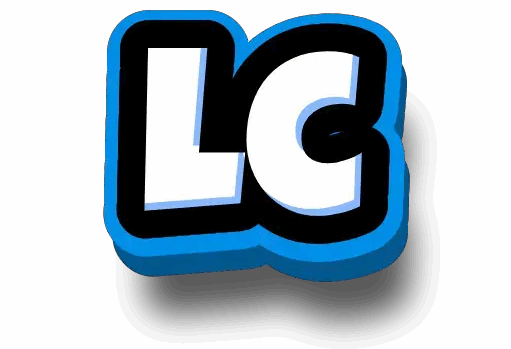Perhaps the most important aspect in determining whether we succeed or fail is the decisions we make. We should spend a lot of time researching various investing strategies, budgeting tips, and other money-related tactics, but occasionally we don’t devote enough time to investigating our own thought processes to make sure we aren’t succumbing to any avoidable flaws in our own human nature.
And that’s bad since it can sometimes mean the world of difference. Therefore, it is what we will do today. We’re going to be discussing how to make better financial decisions or really just better decisions in general by tackling the four villains of good decision making and talking about the various techniques people have come up with over the years to manage and overcome them.
Therefore, having a limited perspective, confirmation bias, negative short-term emotions, and our own overconfidence are the four enemies of sound decision-making. Let’s take a look at what challenges each of these villains poses and what we can do to manage them, starting with narrow framing.
Villain 1: Narrow Frame
So the first villain of good decision making is having a narrow frame. A narrow frame stops us from considering or even recognizing all of the options that are actually available to us. Oftentimes, when we’re in a narrow frame, we ask questions like, “Should I choose option A or B?” This or that question suggests that there are only two possibilities and that we must choose one or the other. But this is oftentimes not the case in reality, and to make the most out of our choices, we need to ensure that we’re considering all of our options.
According to Chip and Dan Heath, authors of the book Decisive, which inspired this video, there are several techniques that we can use to give ourselves the best chance of uncovering all the options available to us in any given decision. Today, I’m going to be covering three of them. They are changing the question from should I do this or that to how can I do this and that? So, switching from or to and the vanishing options test and learning from a mentor, the first technique to overcome a narrow frame is to change the question.
Change the Question
As I said, when we find ourselves asking, “Should I do this or that?” it’s usually a sign that we’re in a narrow frame. Sure, some decisions do have one or two legitimate options, but most have more if we’re willing to take the time to think about them creatively from different angles.
Granted, not all decisions are big enough to warrant taking that time, but still, changing the question to how can I do this? And that can help us make the mental shift into that more creative, problem-solving headspace. And in some cases, it can make a big difference in our finances and lifestyles. Think about it from a budgeting perspective. Imagine John gets a job in Washington, DC.
Should he live in Washington, DC or perhaps one of the surrounding cities? That may be a little more affordable so that he can put more of his money away for his future. Asking the question like that will get us an answer, but it may not always be the best answer because we’re likely not considering all of our options.
For instance, could John share housing costs with someone else to make one of the locations vastly more affordable? Would it be worth it for John to sell his car so that he could live in the city while still keeping his budget under control? I mean, DC is reasonably walkable, so he could easily save time on his commute, which could be spent in other ways, such as starting a side hustle or just exploring the city. Not to mention he wouldn’t have to put up with the traffic, which I don’t think you need me to tell you about. You can be a good thing for his health.
Now, John may not always find an answer he’s happy with, which allows him to do both, but that’s okay. Going through the process can still be beneficial. Perhaps he lands on another option that only allows him to meet one of his goals but is one that he’s happier with than his original answers. Perhaps because they meet some of his secondary goals a little bit better. And even if he does end up right back where he started with his original answers, at least he can be more certain that he’s making the best decision he can, given the information that’s available to him at the time, and that can have its own benefits. I mean, not having to wonder if the grass is greener on the other side is one of them. The second technique to overcome a narrow frame is to use the vanishing options test.
Vanishing Option Test
The vanishing options test is exactly what it sounds like. For one reason or another, you put one of your potential solutions off the table, and then try to figure out how to approach the problem from another angle. This helps to avoid a narrow frame. for obvious reasons. It forces you to come up with at least one other good solution to your problem. One trick that might make coming up with that second solution a little easier is to reframe the problem. Sometimes we’re not fully aware of the actual issue we’re trying to solve, so getting specific about what we want to get out of our solution can sometimes make it easier for us to come up with one that’ll work.
For example, there’s a big difference between saying that you want to get into a good school and land a good job and saying that you want to be working as a CPA four years from now. Technically speaking, both may require some sort of higher education. However, one might lead you to spend all of your time, money, and energy trying to get into and pay for Yale, while the other will recognize that for the purposes of the actual goal, the difference between going to Yale And a state college is not all that huge, but there is probably a pretty huge difference in the amount of time and money that it will take to get into and get through each of the programs.
Not to mention that the chances of getting into at least one of the dozens of state colleges with accounting programs is quite a bit higher than the chances of getting into Yale specifically, or the fact that once you control for aptitude, there usually isn’t a significant difference in lifetime earnings between someone who went to a highly prestigious college and someone who went to a state college. In other words, if you’re already smart enough to get into Yale, then statistically speaking, in most cases, your lifetime earnings aren’t likely to change too drastically if you end up deciding to attend a much more affordable college to get your degree.
Find a mentor
The third technique to overcome a narrow frame is to find someone who has faced the problem you’re trying to solve and ask them how they managed to solve it. Mentors, whether we meet them in person or just find them while researching online, can give us new ideas and options that we may not have considered ourselves, as well as insights on how to avoid common traps and perhaps even achieve our goals quicker and more efficiently through their experience. In some cases, our mentor can even be our past self. So you’re trying to get into the habit of going to the gym three times a week. You’ve made it there on some days in the past, but you haven’t ever managed to do it consistently. You could think back to those times that you did manage to make it to the gym and try to identify patterns.
Perhaps on many of the days that you made it, you were going during lunch time, since that’s the least chaotic portion of your day. Or perhaps you were trying to figure out what triggered you to make an impulse purchase or investment decision that you later regretted. Maybe there’s a certain store where you find it difficult to maintain as strong of control over your spending. As usual, you could go to another store instead, have someone else do the shopping for you at that particular store, or order the items that you need from that store online, or potentially even find other items that will do the job you’re looking to get done without having to go to the store.
Similar adjustments could be made with patterns you identify on the investment side of things, and those kinds of insights can be of great help.
Villain 2: Confirmation Bias
The second villain of good decision making is our own confirmation bias. Once we’ve uncovered all of our options, we still need to ensure that we’re assessing those options properly. However, confirmation bias, or our own tendency to search for, interpret, favor, and recall information that confirms and supports our prior beliefs and values, can make that difficult.
Unfortunately, confirmation bias is something that we all experience, and based on what we know today, there isn’t really any way to get rid of it entirely, but we can still correct for it to a certain degree by seeking out disconfirming information before making any final decisions as well as experimenting.
Find disconfirming information.
So the first technique to correct for our own confirmation bias is to actively seek out information that is contrary to our beliefs. Thanks to the Internet, this is far easier to do than ever before. Review sites are a great way to dig up information on both sides of an argument, get an idea of what’s typical, and then judge the specifics for ourselves.
Blogs, podcasts and videos can be very helpful in finding that information concerning things like lifestyle changes. For instance, if you were considering taking a trip around the country in an RV, you could look online for people who have written or talked about their experiences doing just that.
Some would be positive, others not so much. But going through the process of digging up that information and seriously weighing their comments against your own preferences and personality would make it much more likely that whatever eventual decision you do make would be the best one for you. The same thing can be said about choosing what type of investor you want to be.
Would you want to be more active with your investments? How would you handle serious market volatility? Would you be tempted to make trades you’d later regret? Even if you didn’t? Would there be emotional and stress related costs to consider? What effect would it have on your family?
How much time would it take away from other tasks? How well do active traders typically perform compared to other investing styles? Is the potential upside worth the downside risk? Is there anyone you know who trades actively? Could you ask them about their experiences during those tough times in particular to get a better idea of what it’s really like? Better yet, could you shadow them for a little while to see what a day in the life of a trader really is like? How about other investors?
Comparing and contrasting the experiences could be very beneficial. And what about the people who work with those active investors? What are the financial advisors have to say on the matter? What are the most common pitfalls in scenarios that they run into with their active trading clients? Do these lines of questions seem maybe a little bit negative? Well, yeah, but that’s kind of the point where attempting to find any information that might make us rethink our position, sometimes we won’t find anything, and that’s perfectly fine.
It means we can move forward with confidence, knowing that we’ve done our due diligence and hopefully avoided or are willing to accept any foreseeable difficulties that may come up. The second technique to correct for our own confirmation bias is to experiment. This is referred to as OO Ching in the book.
OO Ching
The idea is that you test out your solution on a small scale, dipping your toe into the water to get a better idea of whether it’ll work or not before diving in headfirst. Some examples include cutting or limiting line items from a budget to see how much we really end up missing them or investing 1% of our income into the company for one year and increasing that contribution by 1% a month until we reach a level that we’re no longer comfortable going beyond. And even an entrepreneur is selling a product at a deep discount just to gauge market interest before ramping up production.
Villain 3: Short-Term Emotion
The third villain of good decision making is short-term emotions. We don’t want to ignore or rid ourselves of these emotions as they can often aid us in the decision making process, particularly when it comes to larger and longer-term decisions that we want to be able to stick to. But we also don’t want them to take control of the whole process.
So, the techniques that seek to circumvent this potential downside tend to focus on taking a step back and thinking long term.
10/10/10 Strategy
The first technique to overcome disruptive short-term emotions is known as the 10/10 strategy. This strategy simply asks you to think long-term by asking how you will feel about a decision 10 minutes from now, ten months from now, and ten years from now. This can have a couple of effects.
Either you recognize that the decision you’re trying to make isn’t, in the grand scheme of things, as important as your emotions would have you believe, as well as giving you the opportunity to think of ways you can course correct down the road if you make a suboptimal choice at first, or you realize the gravity of the decision and how it could still be having a major effect on you years after the fact, which generally causes us to want to gather more information to make a better and more informed decision.
Both of these outcomes can be good, so it’s a nice trick to use whenever you’re facing a choice that feels pretty big. The second technique to overcome disruptive, short-term emotions is to consider what other people would do in our position. This can be a hypothetical replacement at our jobs, a rival company, a role model or mentor, or really anyone, because the goal is to emotionally distance ourselves from the situation as best we can and see the choice for what it is outside of influences like emotional attachments, self-interest, or political infighting. The hope is that we’ll be able to examine the decision more rationally and come to a decision that makes logical sense, feels right, and is in line with our values.
So we’ll be more likely to follow through on it. As you can imagine, this is especially important in business and relationships because, in both, we can become pretty attached to one option over all others. Perhaps we’ve put a lot of work into an idea for a new product or a vacation, and we don’t want to see it get shot down. So we vehemently defend it against all comers without really making an effort to hear what the others are saying.
This also serves to trap us in a very narrow frame because not only are we not considering other options, but we may not even be hearing potential ways to improve the options we’re fighting for because we’re in such a defensive, mental, and emotional state. If we instead take a step back and ask, “What would our role model do if they were in our shoes right now?”, we may be able to shift into a more calm and analytical frame of mind. Sometimes, even just asking this kind of question can make the answer suddenly obvious. I don’t know if you’ve ever experienced something like that before, but I know I have.
Villain 4: Overconfidence
The fourth villain of good decision making is our own overconfidence.
We generally feel we’re fairly good at predicting the future, particularly when it comes to things we know a fair bit about. However, particularly when it comes to finances, that overconfidence can be very costly. Things such as trying to time the market or over-leveraging yourself on an investment can have disastrous consequences should our predictions turn out to be wrong. So we could use some techniques to try and keep ourselves in check when it comes to making those predictions.
Bookending
The main technique I want to discuss to manage overconfidence today is known as bookending. Bookending is a technique we’ve been using on this channel in our diversification series for the past couple of months. It’s where you try to estimate what a typical good and bad outcome might look like to see if you’d be okay with and prepared for outcomes that are quite a bit better or worse than your predicted outcome. For our diversification series, we’ve been looking at the median and average returns of various portfolios, which would be a close approximation to what a typical outcome would be.
But we’ve also looked at the baseline and stretch returns to get an idea of what a good and bad, though unlikely, scenario would look like. A median return of 8% per year is great, but some portfolios are more volatile than others, even over a handful of years. So understanding the range of potential returns is also important when deciding which strategy is right for us, not only so that we’re prepared for what might happen, which by itself can make the experience a little easier to manage, but also so that we can plan out in advance before all the emotions come into play.
TakeAway
What will happen if those better or worse than expected scenarios play out? This can also be helpful for entrepreneurs. For instance, ballparking would be a better than expected and worse than expected amount of demand for a new product or service, and making sure that you’re prepared to produce enough product to meet the demand for a better than expected scenario, as well as being financially solvent enough to weather a worse than expected scenario without having to close up shop, is never a bad idea. So those are the four villains of good decision making and some techniques to help manage and overcome them.











